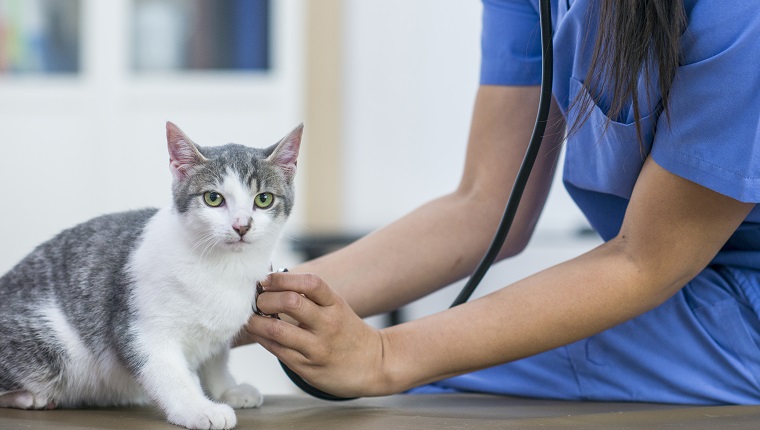Arteriovenous fistula in cats is a condition that involves the appearance of a passage, called a fistula, which affects the flow of blood between the cat’s veins and arteries. It often results in a feline’s heart having to work harder, which can then ultimately result in congestive heart failure.
The condition is frequently caused by an accident or trauma, and it can appear in many areas of the body including the head, the limbs and the lungs.
If you see concerning symptoms in your cat, then you must consult your veterinarian for a proper diagnosis and course of treatment. Here’s what you should know about the symptoms, causes, and treatments of arteriovenous fistula in cats.
Symptoms Of Arteriovenous Fistula In Cats
The symptoms of arteriovenous fistula in cats most often depend on where the fistula is actually located. In many cases, this can be identified by the presence of a lesion on the affected area.
This lesion might produce some of the following common symptoms:
- Scabs forming
- Swelling
- Feeling lethargic
- Ulcers forming
- Gangrene
In severe cases where the condition affects cat’s heart, there is a chance that the animal might show difficulties with breathing, a cough, and a high heart rate.
Causes Of Arteriovenous Fistula In Cats

The cause of arteriovenous fistula in cats is frequently some sort of trauma that caused damage to the blood vessels. Incidents that might cause this level of trauma include an impact accident, a surgery, or even drawing blood.
In rare cases, some cats have the condition from birth.
Treatments For Arteriovenous Fistula In Cats
If you suspect that your cat might be developing arteriovenous fistula, your veterinarian will want to conduct a full physical examination. They’ll ask whether your cat has had any recent accidents or surgeries that could have caused the condition.
Vets can also use thoracic X-rays to check on whether the cat’s heart has enlarged. Vets often also suggest ultrasounds during the diagnostic stage.
Treatment usually involves two options: Surgery to correct the fistula or the use of a catheter that the vet inserts into the fistula to manage and direct the flow of blood.
In very severe cases, vets may need to amputate a limb.
When a cat is recovering, it’s important that they keep up with regular visits to their vet to properly monitor their health and make sure that the fistula has not reappeared.
Has your cat ever suffered from arteriovenous fistula? What kind of treatment did your vet provide? Tell us all about it in the comments below.









